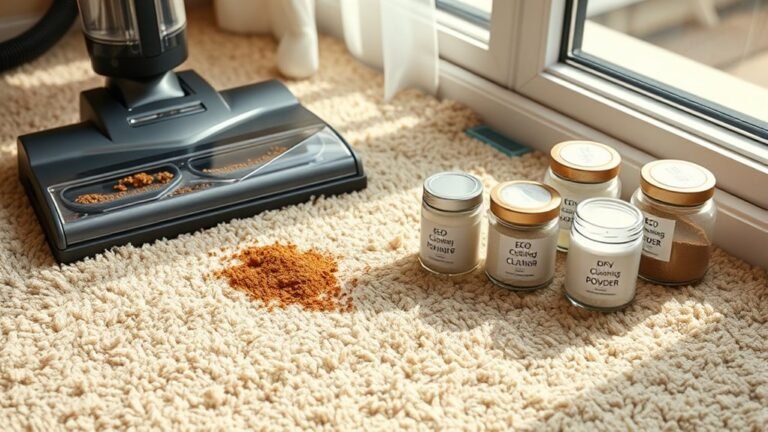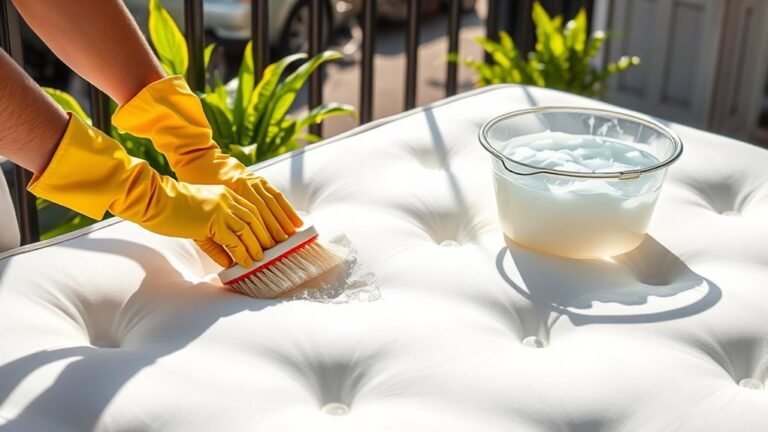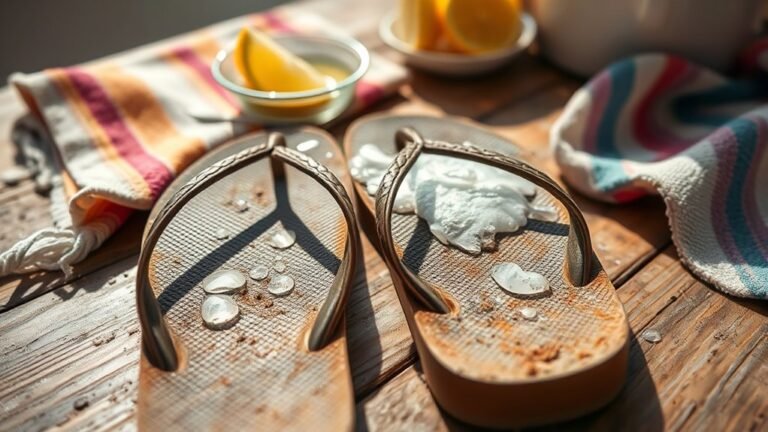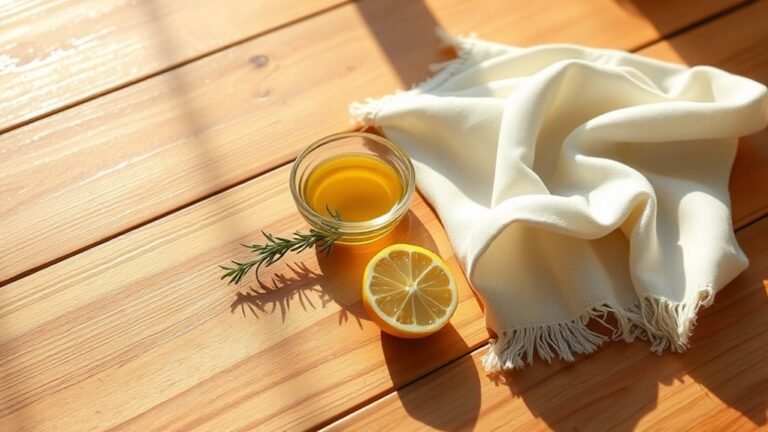Removing Windowsills Stains From Carpets
To remove windowsill stains from carpets, first identify the stain type—whether it’s water damage, rust, or organic residue—so you can pick the right cleaner. Gather soft brushes, microfiber cloths, and mild solutions. Avoid scrubbing hard; instead, blot gently to prevent spreading. Test any cleaner on a hidden spot to protect your carpet fibers. For tough stains, steam cleaning or commercial removers work well. Keep windowsills dry and clean to halt recurrence. Let’s explore precise steps and tips to restore your carpet effectively.
Identifying the Type of Stain

Before you tackle those stubborn windowsill stains on your carpet, it’s essential to identify what caused them. Understanding stain characteristics lets you approach cleaning with precision and confidence. Stain classification breaks down into categories like organic, inorganic, dye-based, or oil-based, each demanding different treatments. For example, water damage marks appear faded or discolored, while rust stains show reddish-brown hues and a gritty texture. Organic stains, such as plant residue from window condensation, often darken and may feel sticky. By carefully observing these details—color, texture, and origin—you gain the freedom to choose the most effective cleaning method without guesswork. This meticulous assessment guarantees you preserve your carpet’s integrity while efficiently removing the stain. Knowing what you’re dealing with is the first step toward a spotless, carefree home. Moisture buildup can lead to mold growth, which often causes dark spots and a musty smell, so identifying such signs on your carpet is crucial for effective cleaning.
Preparing Your Cleaning Supplies
Gathering the right cleaning supplies is vital to effectively tackle windowsill stains on your carpet without causing damage. Start by assembling cleaning tools suited to the specific stain types you identified earlier—this guarantees you address the problem precisely. Have soft-bristle brushes, microfiber cloths, a spray bottle, and a vacuum ready. Choose gloves to protect your skin, especially if you plan on using chemical agents. It’s essential to avoid harsh tools like metal scrapers that can harm carpet fibers. Prepare blotting materials such as white towels or paper towels to lift stains gently. Keep a small bowl for mixing solutions and a container for waste water. By organizing these supplies beforehand, you set yourself up for a smooth, effective cleaning process that respects your carpet’s integrity. Using natural alternatives for cleaning solutions can help avoid harsh chemicals that might damage carpet fibers or irritate your skin.
Using Natural Cleaning Solutions

You’ll find that combining vinegar and baking soda creates a powerful natural cleaner that tackles stubborn windowsill stains without harsh chemicals. Lemon juice adds a fresh scent and natural bleaching properties, making it ideal for lightening discolored carpet fibers. Using these simple ingredients not only protects your carpet but also keeps your home eco-friendly. Choosing plant-based cleaners reduces toxins in your living space and supports a healthier environment.
Vinegar and Baking Soda
A reliable and eco-friendly method for tackling windowsill stains on carpets involves using vinegar and baking soda. You’ll appreciate vinegar benefits: its natural acidity breaks down grime and neutralizes odors without harsh chemicals. Start by sprinkling baking soda over the stain; its mild abrasiveness lifts dirt and absorbs moisture effectively. Next, mix equal parts white vinegar and water in a spray bottle and lightly mist the area. The mixture will fizz, helping to loosen stubborn residue. After it settles for about 10 minutes, blot gently with a clean cloth—never rub, to avoid damaging fibers. Finally, vacuum the dried baking soda residue. This combination not only restores your carpet’s look but also guarantees a toxin-free clean, giving you freedom from synthetic cleaners while respecting your home and environment.
Lemon Juice Benefits
While vinegar and baking soda offer powerful natural cleaning properties, lemon juice brings its own unique advantages when dealing with windowsill stains on carpets. You’ll appreciate lemon juice for its natural acidity, which gently breaks down stubborn stains without harsh chemicals. Beyond its stain-fighting ability, lemon juice acts as a natural deodorizer, eliminating musty odors that often linger around damp windowsills. When you apply lemon juice to a stained area, let it sit briefly to maximize its effectiveness, then blot with a clean cloth. This method not only cleans but also refreshes your carpet’s fibers. By choosing lemon juice, you’re embracing a simple, eco-friendly solution that offers both stain removal and odor control, freeing you from synthetic cleaners while maintaining a fresh, vibrant home environment.
Applying Commercial Carpet Stain Removers
Before applying any commercial carpet stain remover, make certain you test it on a small, inconspicuous area of your carpet to prevent discoloration or damage. Different commercial products target specific stain types, so it’s essential to select one suited for the particular mark left by your windowsill. Read the label carefully to guarantee compatibility with your carpet fiber. Apply the remover sparingly, following the instructions precisely—you want to avoid oversaturation, which can lead to lingering residue or carpet degradation. After application, blot gently with a clean cloth rather than rubbing, preserving the carpet’s texture. By being deliberate and informed in your approach, you maintain control over your carpet’s condition and extend its life, all while effectively lifting those stubborn windowsill stains with minimal fuss. Additionally, using the wrong cleaning tools can complicate stain removal and potentially damage carpet fibers, so selecting the proper applicators is crucial.
Techniques for Deep Cleaning Carpets

To tackle stubborn windowsill stains, you’ll need to go beyond surface cleaning and focus on deep cleaning techniques that target embedded dirt and residue. Understanding the most effective stain removal approaches and selecting the right carpet cleaning methods can make a significant difference in restoring your carpet’s appearance. Let’s explore these strategies to guarantee a thorough and lasting clean. Additionally, using natural cleaning solutions can help avoid harsh chemicals while effectively removing stains.
Effective Stain Removal
Stubborn windowsill stains demand a targeted approach to restore your carpet’s appearance. You must recognize different stain types and understand your carpet fibers to choose the right removal technique. For instance, protein-based stains like sweat require enzymatic cleaners, while oil-based stains call for solvent-based solutions. Always test a small area first to protect your carpet’s integrity.
| Stain Type | Recommended Treatment |
|---|---|
| Protein (e.g., sweat) | Enzymatic cleaner |
| Oil-based (e.g., grease) | Solvent-based cleaner |
| Dye (e.g., ink) | Alcohol-based solution |
| Combination stains | Blot then treat accordingly |
Carpet Cleaning Methods
Several effective carpet cleaning methods can tackle deep-seated dirt and stubborn stains, restoring your carpet’s freshness and longevity. To maintain your freedom from frequent replacements, mastering these techniques is essential:
- Steam Cleaning: This method uses hot water and steam to penetrate carpet fibers, loosening dirt and stains for thorough extraction. It’s ideal for deep cleaning and prolonging carpet life.
- Dry Carpet Cleaning: A low-moisture process using absorbent compounds that bind to grime. It’s quick, leaving your carpet ready to use almost immediately—perfect for busy lifestyles.
- Shampooing: This involves applying a foamy detergent, scrubbing, and then vacuuming it out. It’s effective for surface stains but requires careful carpet maintenance to avoid residue buildup.
Choosing the right method keeps your carpets pristine and your living space free.
Preventing Future Windowsill Stains
Although removing stains is essential, preventing them from forming in the first place saves you time and effort. Effective stain prevention starts with regular windowsill maintenance. Keep the area dry and clean by wiping away dust, dirt, and moisture promptly. Installing a protective barrier, like a waterproof mat or sealant, can greatly reduce the risk of stains transferring from the windowsill to your carpet. Also, consider trimming plants or relocating items that can drip or leak onto the windowsill. By maintaining this area meticulously, you eliminate common sources of stains before they reach your carpet. Taking these proactive steps not only protects your flooring but also gives you the freedom to enjoy your space without the constant worry of stubborn windowsill stains. Regular cleaning using microfiber cloths can effectively trap dust and prevent buildup that contributes to stains.
Frequently Asked Questions
Can Windowsill Stains Damage Hardwood Floors?
Yes, windowsill stains can damage hardwood floors if left unattended. When moisture or dirt from windowsills drips onto your hardwood, it can cause discoloration, warping, or even mold. To avoid this, regular windowsill cleaning is vital, and you should always prioritize hardwood protection by using mats or sealants. Taking these careful steps guarantees your floors stay beautiful and free, letting you enjoy your space without worry.
How Long Does It Take for Stains to Set in Carpets?
Stains can start setting in carpets within minutes, so quick action is key for effective stain prevention. If you want to keep your carpets looking fresh and maintain their beauty, it’s essential to clean spills immediately. Regular carpet maintenance, like vacuuming and prompt spot cleaning, helps you avoid stubborn stains that become tougher over time. By staying vigilant, you’ll enjoy freedom from stubborn marks and a pristine carpet for years to come.
Are There Any Pet-Safe Carpet Stain Removers?
You’ll be glad to know there are plenty of pet safe options for tackling carpet stains. Many natural remedies, like a mix of white vinegar and baking soda, work wonders without harsh chemicals that could harm your furry friends. You can also find pet-friendly commercial stain removers specifically formulated to be safe yet effective. Always test a small area first, and you’ll keep your carpets clean while ensuring your pets stay safe and happy.
Can Steam Cleaners Remove Windowsill Stains Effectively?
You’ll find steam cleaning effectiveness impressive when tackling windowsill stain removal on carpets. The high temperature loosens dirt and grime, while the moisture lifts stains without harsh chemicals. However, stubborn or old stains might need pre-treatment for best results. Be meticulous—test a small area first to guarantee your carpet handles steam well. With care, steam cleaning offers a thorough, chemical-free way to refresh your carpet and reclaim your space’s freedom.
What Causes Windowsill Stains to Reappear After Cleaning?
When you notice stain reoccurrence, it’s often because the cleaning techniques didn’t fully eliminate the original source—like moisture or residues trapped deep within fibers. If you don’t address underlying issues, stains can resurface, frustrating your efforts. To truly prevent this, you’ll want to use thorough methods that remove both visible stains and hidden contaminants. Being meticulous with drying and treatment guarantees stains won’t make an unwelcome comeback, giving you lasting freedom from repeat marks.






